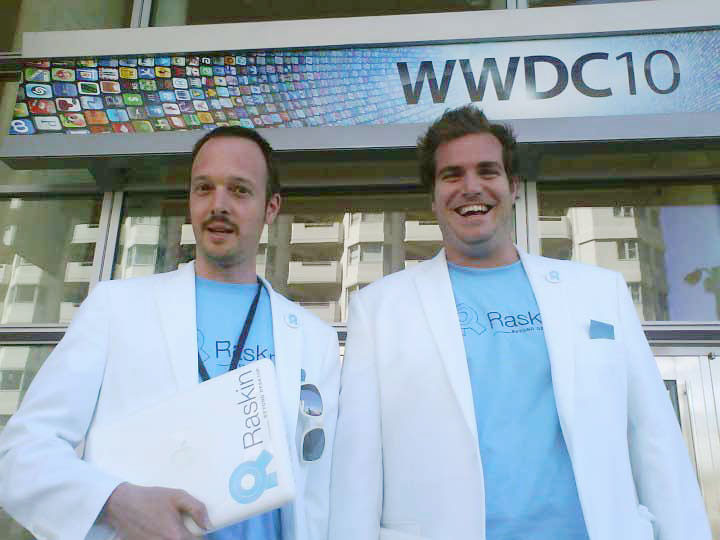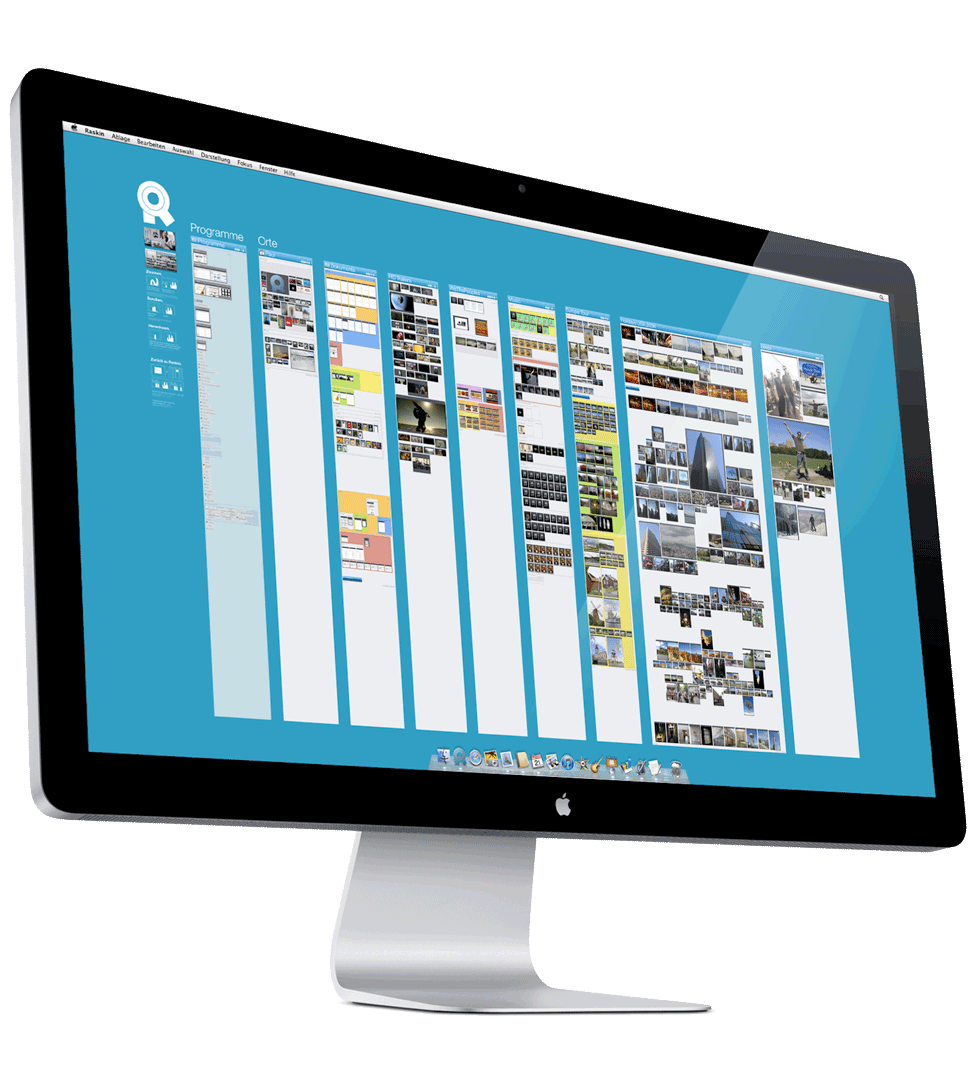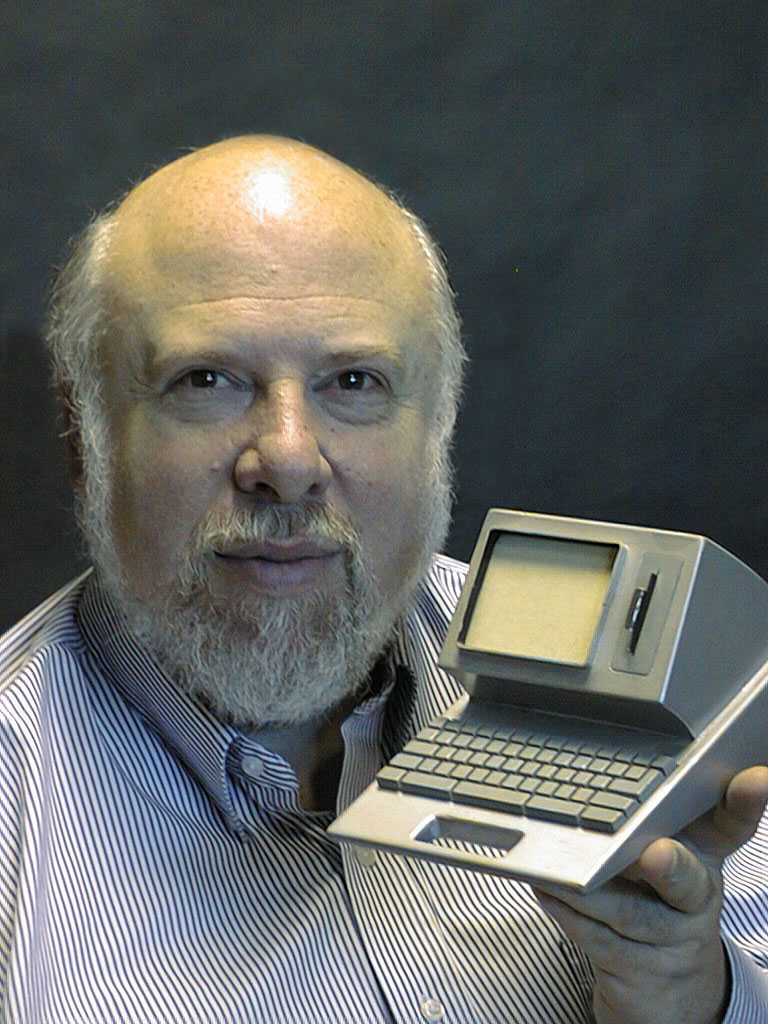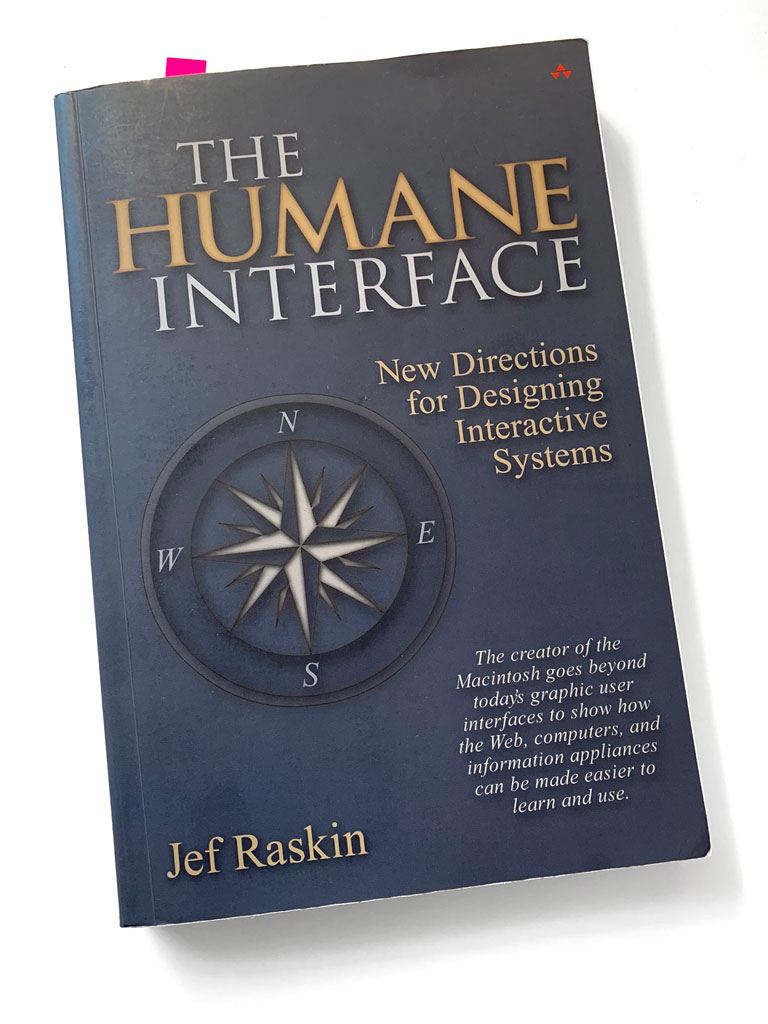Five questions for Martin Halter, Partner at Raskin Apps about Jef Raskin
For over 20 years, Raskin App's philosophy has been based on the fundamental principles and approaches of Jef Raskin. What are the reasons for this?
The idea of the zoomable user interface convinced me immediately: Jef presented the idea in his book "The Humane Interface" in 2000, based on a hospital information system.

Martin Halter and Greg Bättig at Apple's WWDC 2010 in San Francisco
As students at the University of Applied Sciences in Rapperswil, we wrote a student research project in 2001 in which we analyzed zoomable user interfaces and programmed an initial prototype of a file browser. We successfully tested this in the ETH usability lab. However, the performance of the best Macs was only sufficient to display a few hundred files. In 2009, their performance had finally increased sufficiently to realize a zoomable user interface for all files on the Mac. We presented this at the Apple developer conference in San Francisco in 2010. The name of the app: Raskin For Mac.

The first version of Raskin For Mac, presented at Apple's WWDC 2010 in San Francisco
Jef Raskin was also one of the pioneers of user-centered design and user experience. When Jef and other software architects and engineers developed "Macintosh" in the 1970s, computers were very cumbersome to use. It was common for computers to be complicated to use. This was also due to the professional arrogance of IT people. That's why they ridiculed the Macintosh as a "toy" for years. Jef was ahead of his time: by applying human needs to clear ergonomics, he had a lasting influence on the way computer scientists thought.
A paradigm shift, so to speak, is how Jef approached the interface design from the human way of thinking.
Jef Raskin wrote the standard work "The Humane Interface" in 2000, which was also praised by Jakob Nielsen. Is the book still relevant today?
Yes, because when it comes to our five senses such as sight, taste, touch, hearing and smell, they are as firmly anchored in us as ever.
This means that we can record up to approx. 25 images per second, similar to our ancestors. This also applies to the perception of musical intervals. Consequently, focus and concentration on certain things still work according to the same rules.
What is new, however, are the interfaces such as computers, mice and VR headsets. Our handling of the information and content presented and its feedback remains the same.
Steve Jobs and Jef Raskin were strangers to each other. Why might that have been?
One of Steve Jobs' strengths was that he was able to convince his team of his vision, i.e. that he was able to build up a "reality distortion field". In the development of Macintosh, Steve used his position as founder of Apple to determine the scope and price of the final product. Steve was already a millionaire at the age of 24 and had excellent knowledge of supply chains and chip prices on the world market.
Steve tended to be a visual person with a focus on design and calligraphy.
Jef Raskin was employed by Apple in the documentation department. He and his team wrote manuals there. While writing the manuals, Jef saw where the operation was inconsistent and incoherent. He thought about how long a system should take to respond so that users were not taken out of their flow.
Jef tended to be an acoustic person with a strong sense of hearing, similar to a virtuoso musician.

Jef Raskin (✝ 2005) holding a model of his "Canon Cat"
Image: Aza Raskin; Perteghella at it.wikipedia, CC BY 2.0, via Wikimedia Commons
One topic of his book is interfaces - what does that mean in concrete terms?
Interfaces connect people with their environment. We only sense and feel alive when we can grasp the world around us with all our senses.
Jef gets specific about the human-machine interface. The computers have screens, speakers, cables and antennas that connect them to the environment. They usually also have cameras to read our gestures or Braille terminals to make the computer's responses tactile for people with impaired vision.
Ideally, the interfaces should function in such a way that we can operate them easily. The interface should put human activities above everything else. A specific requirement for the software is therefore that every single step is reversed and all entries are saved immediately so that nothing is lost.
Another example Jef gives is the hermaphroditic or sexless connector: This connection is designed so that there is neither a plug nor a socket. Both ends of the cable can be connected to each other - whether as an extension or as a direct connection.
For signal and charging cables, it would be a great advantage if USB connection cables could be used on both sides. For those interested, here is a more in-depth look: "Genderless (hermaphroditic) connectors" on Wikipedia.
This has worked perfectly for years in the rail transportation sector. S-Bahn trains can be attached to each other, regardless of whether they are moving forwards or backwards on the track. The Brio train is different; here the magnets on the wagons are clearly defined and determine how a wagon must be positioned.
Which current device comes closest to the vision of the first Macintosh?
The iPad as a simple, consistent user interface in a handy computer for around USD 1000. I think Jef Raskin would have liked the iPad.

